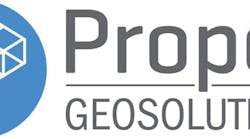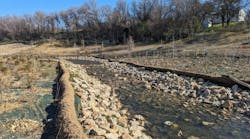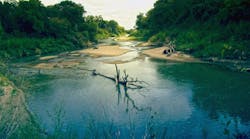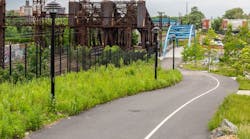Ben Campbell is market development manager for Propex Geosolutions. Adam Pierce is erosion control regional engineer for Propex Geosolutions. Campbell can be reached at [email protected] and Pierce can be reached at [email protected].
undefinedCoastal dune lakes are freshwater lakes located within two miles of an ocean coastline. These ecosystems are only found in a handful of locations around the globe, including Madagascar, New Zealand, Australia and South Walton County, Fla.
Walton County is home to 15 coastal dune lakes, some of which are only a few feet from the Gulf of Mexico. These waterways create transitory interchanges between a natural storm water lake and the Gulf. When a coastal dune lake reaches a high-water level, it will break through the dune system, forming a channel between the lake and the Gulf. The channel, or outfall, is critical for regulating water levels and mitigating flooding.
Oyster Lake is one of the coastal dune lakes located in Walton County. Major storms resulted in a blockage of Oyster Lake’s outfall, and urban growth along Highway 30A added strain on its overall health. If the outfall remained blocked, it eventually would release thousands of gallons of water, causing flooding to nearby vacation homes.
The county restored the outfall; however, Walton County residents wanted to reinforce the outfall to protect from future blockages and flooding. In addition to stabilizing the outfall’s channel, another goal of the project was preserving the natural beauty of Oyster Lake. A solution that promotes vegetation was needed, so hard-armor reinforcement like rock riprap or concrete block was not an option.
Reducing Environmental & Ecosystem Impacts
Armormax Engineered Earth Armoring Solution was selected to reinforce the channel sides of the outfall. This system was selected because it provides slope stabilization and erosion control while promoting vegetation. Another important concern for the project was the impact the reinforcement solution would have on the ecosystem, which is home to several endangered species, including the Choctawhatchee beach mouse, snowy plover and loggerhead and green sea turtles.
Armormax is composed of Pyramat high performance turf reinforcement mats (HPTRMs) and engineered earth anchors that work together to lock soil in place and protect against hydraulic stresses. From cradle to grave, its carbon footprint is 2.7 kg of carbon dioxide (CO2)per 1 sq meter of material. This is about the same impact as driving for six miles. Comparatively, concrete-based alternatives for erosion control are up to 10 times higher, ranging from 20 to 35 kg of CO2 per 1 sq meter.
Pyramat is an engineered plastic made from woven polypropylene. The growing concern over plastics and their impact on the environment, specifically the oceans, was a consideration. There are a number of differences between engineered plastics and single-use plastics, such as a water bottle. Engineered plastics are stabilized to prevent degradation and designed to perform as long-term or even permanent solutions, whereas single-use plastics are not stabilized, are discarded quickly and begin to breakdown immediately. Additionally, single-use plastics are made from various unstable polymers that breakdown into microplastics and leach harmful chemicals. Pyramat is made from polypropylene, which has been found to contain no leachable components.
Once installed, Armormax helps decrease sedimentation and pollutants and encourages infiltration of water back into the ground water table. The U.S. EPA identified systems that utilize HPTRMs as a best management practice for improving water quality.
Armormax also features a patented trilobal design that locks seeds and soil in place to promote rapid root development for long-term vegetation. This vegetated outcome supports a living shoreline, whereas hard armoring can decrease streamside vegetation and adversely impact fish populations. A vegetated shoreline helps to maintain cooler water temperatures than traditional hard armoring, which is healthier for aquatic life habitats.
During installation, more than 2,000 sea oats were planted within the system. Its X3 fiber technology helps hold roots in place so they are not washed away during rain events. The vegetation establishment of the armoring solution is critical to long-term performance, providing a matrix of woven HPTRM trilobal fibers, roots, stems and soil to serve as a securing mechanism to the slope face.
More than 2,000 sq yards of Armormax with 6-ft B2 anchors were installed along the channel to reinforce the outfall. The installation frequency or spacing of anchors is a result of the slope stability analysis. Anchors typically are installed in a staggered pattern, creating a checkerboard effect. HPTRM roll edge overlaps should be a minimum of 3 in. secured with anchors according to the prescribed pattern accompanied by securing pins on 12 in. centers.
After installation, Hurricane Michael made landfall 60 miles east of Oyster Lake. The effects at this project location were winds up to 80 mph, storm surge and significant rainfall and flooding. The vegetated slopes of the outfall withstood extreme conditions, protecting several beachfront homes, a Highway 30A bridge and a portion of 30A’s 19-mile bike path that runs along the famous Emerald Coast beach communities from Dune Allen to Seaside.







